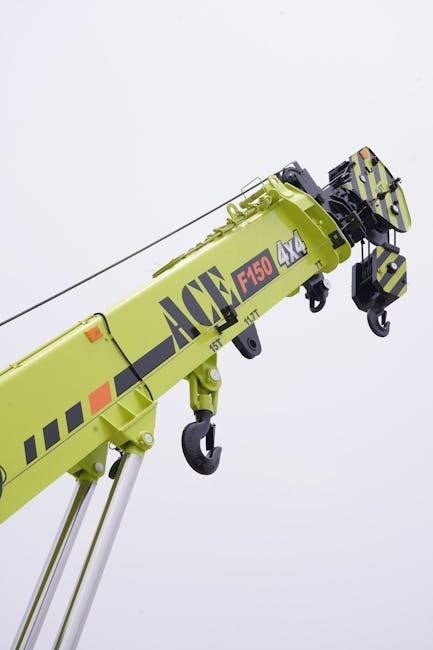Historical thinking skills empower students to analyze and interpret the past critically. These skills, including sourcing, contextualization, and corroboration, foster deeper understanding of historical events and their relevance today.
1.1 Definition and Importance of Historical Thinking Skills
Historical thinking skills are essential tools for critically analyzing and interpreting the past. They involve sourcing, contextualization, and corroboration, enabling students to engage deeply with historical evidence. These skills are vital as they promote critical thinking, problem-solving, and the ability to understand multiple perspectives. By fostering historical literacy, they empower learners to connect past events to contemporary issues, making history relevant and meaningful. The integration of these skills into education ensures that students move beyond mere memorization, developing a nuanced understanding of historical narratives. This approach not only enhances academic performance but also prepares individuals to engage thoughtfully with complex societal challenges. The application of historical thinking skills is integral to curriculum design, ensuring that students develop a robust foundation for lifelong learning and intellectual inquiry.
1.2 Overview of the “OFY Unit Activity” Concept
The “OFY Unit Activity” concept is a curriculum design approach that integrates historical thinking skills into cohesive learning units. It emphasizes organic incorporation of critical thinking activities, ensuring they align naturally with lesson objectives. This method avoids isolating skills as mere checkmarks, instead embedding them within meaningful contexts. By doing so, it enhances student engagement and deeper understanding of historical concepts. The activity design focuses on sourcing, contextualization, and corroboration, encouraging students to analyze primary and secondary sources effectively. This approach also supports the development of problem-solving abilities using historical data, preparing students for complex analytical tasks. The “OFY Unit Activity” is particularly noted for its ability to connect historical events to broader themes, fostering a comprehensive grasp of the past and its relevance to the present.

1.3 Relevance of Historical Thinking in Modern Education
Historical thinking skills are essential in modern education as they cultivate critical thinking, analytical reasoning, and problem-solving abilities. These skills enable students to move beyond mere memorization of facts, fostering a deeper understanding of complex historical narratives. By mastering sourcing, contextualization, and corroboration, students develop the ability to evaluate evidence, challenge assumptions, and construct well-supported arguments. Such competencies are vital in an information-rich world, where the ability to discern credible sources and interpret diverse perspectives is crucial. Historical thinking also promotes empathy and understanding of global issues, preparing students to engage thoughtfully with contemporary challenges. Integrating these skills into curricula ensures students become informed, reflective, and intellectually curious individuals capable of navigating an increasingly complex world.

Key Concepts in Historical Thinking
Historical thinking involves sourcing, contextualization, and corroboration. Sourcing evaluates evidence credibility, contextualization places events in historical context, and corroboration verifies information across multiple sources to build accurate interpretations.
2.1 Sourcing: Analyzing Primary and Secondary Sources

Sourcing involves critically analyzing primary and secondary sources to understand their origins, purposes, and reliability. Primary sources, such as documents, images, or artifacts, provide direct evidence from the time period. Secondary sources, like textbooks or scholarly articles, interpret primary sources. By evaluating sources, students assess credibility, bias, and context, developing critical thinking skills. This process helps distinguish fact from interpretation and identifies gaps or limitations in historical records. Sourcing activities often include comparing multiple sources to verify information and build a comprehensive understanding. Such exercises prepare students to engage with complex historical narratives and form evidence-based conclusions. These skills are essential for fostering a deeper understanding of history and promoting analytical thinking in students. Sourcing is a foundational tool for historians and a key component of historical thinking skills.
2.2 Contextualization: Understanding Historical Context
Contextualization involves placing historical events, sources, or perspectives within their broader historical, social, and cultural settings. This skill helps students understand the circumstances and conditions that shaped the past. By analyzing the time period, location, and cultural norms, students can interpret historical evidence more accurately. Contextualization prevents presentism, where modern values are imposed on historical events. Activities in the “OFY Unit Activity” encourage students to consider the context of primary and secondary sources, such as the author’s intent, audience, and historical background. This skill fosters empathy and understanding of differing viewpoints. By situating events in their proper context, students develop a nuanced interpretation of history. Contextualization is essential for making informed judgments about historical events and their relevance to contemporary issues. It enhances critical thinking and prepares students to engage with complex historical narratives effectively.
2.3 Corroboration: Verifying Historical Information
Corroboration is the process of verifying historical information by cross-referencing multiple sources to ensure accuracy and reliability. This skill teaches students to critically evaluate evidence and identify inconsistencies or biases. By comparing primary and secondary sources, students can strengthen their understanding of historical events and themes. Corroboration helps students develop a nuanced perspective, as it encourages them to consider diverse viewpoints and evidence. Activities in the “OFY Unit Activity” often involve sourcing and analyzing multiple documents to validate historical claims. This practice fosters critical thinking and objectivity, essential for constructing well-supported historical arguments. Corroboration also prepares students to address conflicting interpretations and develop a deeper understanding of historical complexity. By mastering this skill, students can approach historical inquiry with confidence and rigor, ensuring their conclusions are grounded in credible evidence.

Curriculum Design for Historical Thinking
Curriculum design for historical thinking involves creating structured units that integrate activities fostering critical analysis, evidence-based reasoning, and contextual understanding. These units align with learning objectives, ensuring students master historical inquiry skills through engaging tasks and assessments.
3.1 Integrating Historical Thinking Activities into Units
Integrating historical thinking activities into units requires intentional design to ensure alignment with learning objectives and student engagement. These activities, such as document analysis or comparative studies, should be embedded throughout the curriculum to foster critical thinking and evidence-based reasoning. Teachers can structure lessons to include primary and secondary source analysis, encouraging students to contextualize and corroborate historical information. By incorporating these skills into thematic units, students develop a deeper understanding of historical narratives and processes. Activities should be scaffolded to build complexity, starting with foundational skills like sourcing and progressing to advanced techniques like historical problem-solving. Regular formative assessments can help gauge student mastery and inform instruction. This approach ensures historical thinking is not an add-on but a core component of the curriculum, preparing students to engage with history meaningfully and critically.
3.2 Aligning Activities with Learning Objectives
Aligning historical thinking activities with learning objectives ensures that instruction remains focused and purposeful. Educators must define clear objectives tied to historical thinking skills, such as sourcing, contextualization, and corroboration. Activities should be selected based on their ability to address these objectives effectively. For example, a document analysis task might target the skill of evaluating primary sources, while a comparative analysis could focus on identifying causation in historical events. Objectives should be specific, measurable, and aligned with broader curricular goals. Teachers must also ensure that activities are appropriate for the students’ developmental level and build progressively. By connecting activities to learning objectives, educators create a coherent and intentional learning experience, helping students develop historical thinking skills systematically and effectively.

3.3 Assessing Student Mastery of Historical Thinking Skills
Assessing student mastery of historical thinking skills requires a combination of formative and summative strategies. Teachers can use rubrics to evaluate skills like sourcing, contextualization, and corroboration, ensuring clarity and consistency. Performance tasks, such as document analysis or historical arguments, allow students to demonstrate their abilities. Class discussions and written reflections provide insights into their understanding. Quizzes and projects can also measure retention and application of skills. Feedback should be specific, guiding students to improve. Digital tools, like online quizzes or peer-review platforms, can enhance assessment efficiency. By aligning assessments with learning objectives, educators can accurately gauge student progress and adjust instruction. Regular assessment helps identify areas needing reinforcement, ensuring students develop historical thinking skills effectively;

Specific Activities for Developing Historical Thinking
Specific activities for developing historical thinking include document analysis, debates, and problem-solving tasks using historical data to enhance critical thinking and analytical skills.
4.1 Document Analysis Activities
Document analysis activities are central to fostering historical thinking skills, as they require students to engage directly with primary sources. These activities involve careful examination of historical documents, such as speeches, letters, photographs, and official records, to uncover their historical significance. By interpreting these sources, students learn to identify biases, perspectives, and context, which are essential for critical thinking. Educators often guide students by posing questions that prompt deeper analysis, such as the author’s intent, the audience, and the broader historical context. These exercises not only enhance sourcing and contextualization skills but also encourage students to corroborate evidence from multiple sources. Document analysis activities are particularly effective when paired with scaffolding techniques, helping students of varying skill levels to engage meaningfully with complex historical materials. This approach ensures a nuanced understanding of the past and its relevance to contemporary issues.
4.2 Comparative Analysis of Historical Events
Comparative analysis of historical events is a powerful strategy for developing historical thinking skills, as it encourages students to identify patterns, similarities, and differences across time and space. By examining multiple events, such as revolutions, economic crises, or social movements, students gain a deeper understanding of historical processes and causation. Educators often structure these activities by asking students to analyze primary sources, timelines, and secondary interpretations of the events. Questions guiding the analysis might include: What were the underlying causes of each event?, How did the outcomes shape subsequent developments?, and What role did context play in shaping the events? This approach fosters critical thinking and the ability to synthesize information. By comparing historical events, students also develop a more nuanced appreciation for the complexity of historical change and its relevance to contemporary issues. Such activities align closely with learning objectives focused on contextualization and corroboration.
4.3 Problem-Solving Activities Using Historical Data
Problem-solving activities using historical data engage students in critical thinking by presenting them with historical dilemmas or challenges. These activities encourage students to analyze evidence, evaluate options, and propose solutions. For example, students might be asked to advise a historical leader on a pivotal decision or address a societal issue from the past. Primary sources, such as speeches, letters, and statistical data, are often used to inform their decision-making. Role-playing and scenario-based exercises are common methods, fostering creativity and ethical reasoning. By grappling with historical problems, students develop a deeper understanding of the complexities of the past and improve their ability to think historically. These activities also align with broader learning objectives, such as contextualization and corroboration, while preparing students to apply historical insights to contemporary challenges.

Case Studies and Examples
Case studies provide real-world applications of historical thinking, enabling students to analyze significant events and decisions, fostering problem-solving and critical thinking through practical examples.
5.1 The Paris Peace Conference of 1919: A Case Study
The Paris Peace Conference of 1919 serves as a pivotal case study for applying historical thinking skills, particularly in analyzing the complexities of international diplomacy and decision-making. Following World War I, leaders from the Allied Powers convened to negotiate the Treaty of Versailles, aiming to establish a new global order. This event exemplifies the challenges of balancing national interests with ideals of peace and justice. Students can engage with primary sources, such as the Treaty itself orWoodrow Wilson’s Fourteen Points, to critically evaluate the motivations and compromises of leaders like Clemenceau, Lloyd George, and Wilson. By sourcing and contextualizing these documents, students develop skills in understanding the historical context of geopolitical negotiations. Additionally, the conference’s outcomes, including the rise of fascism and the interwar instability, highlight the long-term consequences of historical decisions. This case study aligns with the OFY Unit Activity framework, fostering critical analysis and problem-solving through historical inquiry.

5.2 Analyzing the Covenant of the League of Nations
The Covenant of the League of Nations, established in 1920, offers a rich case study for historical thinking skills, particularly in understanding international diplomacy and idealism. The document, drafted during the Paris Peace Conference, outlined the League’s structure, goals, and mechanisms for maintaining peace. Students can analyze primary sources like the Covenant’s text and Woodrow Wilson’s speeches to identify its key principles, such as collective security and mediation. This activity encourages contextualization by exploring the historical context of post-World War I optimism and the challenges of enforcing its ideals. By sourcing and corroborating information, students can evaluate the Covenant’s strengths, such as its emphasis on dialogue, and its weaknesses, like the reliance on Allied Powers for enforcement. This analysis aligns with the OFY Unit Activity framework, fostering critical engagement with historical documents and their broader implications.
5.3 Historical Decision-Making: The Truman Administration
The Truman Administration offers a compelling case study for examining historical decision-making, particularly through the lens of the atomic bombings of Hiroshima and Nagasaki. Students can analyze Truman’s process of weighing moral, political, and military considerations. Primary sources, such as the Truman Doctrine and memos from advisors like Secretary of War Henry Stimson, provide insights into the complexities of leadership. This activity encourages sourcing and contextualization by exploring the post-World War II climate and the emergence of the Cold War. By evaluating Truman’s decisions, students can assess the long-term consequences of his actions, such as the acceleration of nuclear arms races. This OFY Unit Activity fosters critical thinking about the challenges of historical decision-making and its lasting impact on global relations.
Resources and References
Essential resources include primary sources, academic journals, and educational frameworks for historical thinking skills. These materials support teachers in designing effective OFY unit activities and fostering student engagement.
6.1 The Foreign Relations of the United States (FRUS) Series
The Foreign Relations of the United States (FRUS) series is a cornerstone resource for historical research and education. Published by the U.S. Department of State, it provides declassified documents on major U.S. foreign policy decisions and events. FRUS volumes offer primary sources such as memos, cables, and meeting transcripts, enabling students to analyze historical contexts and decision-making processes. For OFY unit activities, FRUS documents are invaluable for sourcing, contextualization, and corroboration exercises. They allow students to engage with raw historical materials, fostering critical thinking and historical inquiry skills. Teachers can integrate FRUS into curriculum design by aligning its content with learning objectives, such as understanding diplomacy or international relations. Additionally, FRUS supports assessments by providing authentic sources for student analysis. This series is a trusted resource for both educators and researchers, offering unparalleled insights into U.S. history and global interactions.
6.2 Primary Sources for Historical Thinking Activities
Primary sources are foundational for historical thinking activities, offering firsthand accounts of events, ideas, and experiences. These sources, such as letters, speeches, photographs, and government documents, provide direct evidence from the past. They enable students to engage in sourcing, contextualization, and corroboration, fostering critical analysis and historical inquiry. For OFY unit activities, primary sources like diaries, treaties, and newspaper articles allow students to explore diverse perspectives and reconstruct historical narratives. Teachers can design activities where students analyze these sources to identify biases, evaluate credibility, and draw conclusions. By integrating primary sources, educators help students develop a deeper understanding of historical contexts and the complexities of historical interpretation. Access to these materials, often available through archives and online databases, makes them a versatile tool for fostering historical thinking skills in the classroom.
6.3 Recommended Reading for Teachers and Students
Recommended reading plays a crucial role in enhancing historical thinking skills, offering in-depth insights and practical strategies. For teachers, resources like Thinking Historically by David Kobrin provide innovative approaches to integrating historical inquiry into curricula. The American Historical Association’s Guide to Teaching History is another valuable tool, offering classroom-tested methods for fostering critical thinking. For students, textbooks such as A History of the World in 100 Objects by Neil MacGregor engage learners with narrative-driven history. Supplementary materials like Historical Thinking and Other Unnatural Acts by Sam Wineburg encourage students to question and analyze historical narratives. Online platforms like the Stanford History Education Group also offer accessible lesson plans and primary sources. These readings collectively enrich both instruction and learning, ensuring a comprehensive understanding of historical thinking skills in the context of OFY unit activities.
Historical thinking skills empower students to critically analyze the past, fostering informed citizenship. Future directions include integrating technology, promoting interdisciplinary connections, and encouraging lifelong historical inquiry for deeper understanding and engagement.
7.1 The Impact of Historical Thinking Skills on Student Learning
Historical thinking skills profoundly enhance student learning by fostering critical analysis, empathy, and problem-solving abilities. These skills enable students to interpret complex historical sources, evaluate evidence, and construct well-supported arguments. By engaging with the past, students develop a deeper understanding of historical contexts and their relevance to contemporary issues;

Such skills also promote interdisciplinary connections, improving students’ ability to synthesize information across subjects. The development of historical thinking encourages active participation in learning, as students become proficient in questioning, analyzing, and interpreting historical narratives. Ultimately, these competencies prepare students for lifelong learning and informed civic engagement.
7.2 Innovations in Teaching Historical Thinking
Innovations in teaching historical thinking are transforming how students engage with the past, fostering deeper understanding and critical engagement. One key development is the integration of digital tools, such as interactive timelines, virtual reality simulations, and online archives, which provide immersive learning experiences. Additionally, collaborative activities like historical role-playing and problem-solving exercises encourage students to think creatively and apply historical context to real-world issues.
Teachers are also incorporating diverse primary sources, such as oral histories and visual artifacts, to enrich students’ perspectives. These approaches not only enhance student motivation but also prepare them to navigate complex historical narratives in a rapidly changing world. By embracing these innovations, educators are equipping students with the skills to analyze and interpret history more effectively.
7.3 Encouraging Lifelong Historical Inquiry
Encouraging lifelong historical inquiry involves fostering a deep curiosity and appreciation for understanding the past. Educators can achieve this by creating engaging and relevant learning experiences that extend beyond the classroom. One effective strategy is to encourage students to explore history through personal interests, such as family genealogy or local history projects. Additionally, integrating historical themes into extracurricular activities, like history clubs or community events, can sustain student interest. Teachers should also emphasize the relevance of history to contemporary issues, helping students see how the past shapes the present. By nurturing critical thinking and inquiry skills, educators empower students to become lifelong learners who value history as a tool for understanding the world. These practices ensure that historical thinking becomes a lasting part of students’ intellectual and personal growth.


























































































